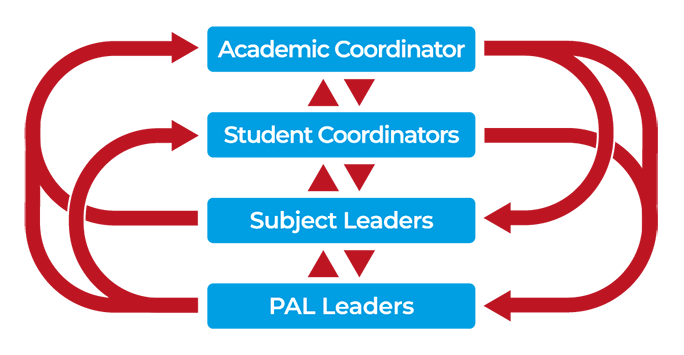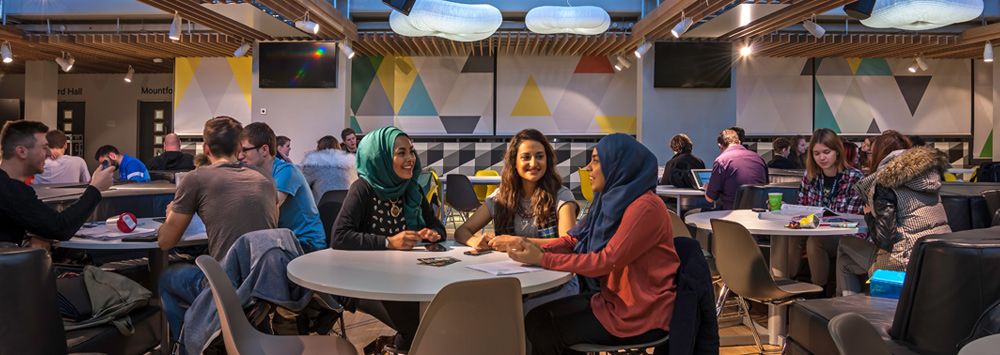Benefits
For leaders:
- Enhancing communication, leadership, collaboration and employability skills (Jones et al., 2012: Micari et al. 2010).
- Deepening understanding of the subject (Keenan 2014).
- Increasing confidence (Ford 2015).
- Improving staff-student partnership (Sedghi & Lunt 2015).
For participants:
- Adapting to university life and learning study strategies (Sedghi 2013).
- Building confidence with challenging subjects (Makola, 2017).
- Gaining awareness of course expectations.
- Approaching problems from different angles.
Putting it into practice
Although PAL schemes are diverse and vary from one department to another, we provide staff with adaptable strategies and key points to tailor the system to the requirements of their learning environments. We have already demonstrated this transferability as support has been provided to colleagues in five other departments within the University of Liverpool.
It is noteworthy that the students’ active engagement from the early stages of the process is a critical element of a successful scheme. PAL is a scheme which is run by students for students.
The strategies to implement PAL are:
- The planning stage is to identify the study subjects to be supported by PAL, the regularity and delivery of PAL sessions, timetabling, staff and students’ responsibilities, leader recruitment and training, and target students.
- Implementation of PAL includes the assignment of the academic coordinator, publicising PAL to higher and lower year students, recruiting student leaders, timetabling, leader training, and preparing session plans.
PAL structure
Our experience shows that students value the informality of PAL but appreciate the organised sessions which are structured for the convenience of participants.
The following figure shows the PAL structure and the communication links between coordinators and leaders to keep PAL sustained over time.

Leaders and coordinators take on different responsibilities:
- Subject Leaders plan the sessions and prepare the relevant materials.
- PAL Leaders use these materials to facilitate discussions around selected topics in small groups of students.
- The Academic Coordinator and Student Coordinators supervise the overall organisation of PAL and the communication between leaders and participants.
A structured scheme has a positive impact on students’ experience which results in improved student retention.
Evaluation of the scheme
Staff-student partnership in planning, implementing and coordinating the system is essential. PAL is a scheme run by students for students. Ongoing evaluation of PAL to identify the issues, to find the best solutions and to improve the system as soon as possible is a key factor for the sustainability of the programme.
Getting feedback, feeding forward the feedback and taking quick action in order to resolve the issues and to improve the scheme are crucial strategies to keep students motivated.
Challenges
Participant attendance is usually a significant issue in PAL. Although the Year 1 attendance always diminishes through an academic year, there are a few strategies to make sure the drop is not significant, e.g. formally timetabling the sessions, booking a large room to increase flexibility when the number of attendees differs from one week to another, linking session plans to recent teaching materials and future class tests, and starting PAL a few weeks into a semester so there is enough taught material to be covered.
Student experience of PAL
“I got involved in Peer-assisted learning, which really helped me gain confidence speaking in front of people, allowed me to have practice at developing teaching resources and help guide me towards a career in teaching.”
“With the help of the PAL Leaders, I got advice and support I needed to understand and structure my studies. They offered tips and explanations on some topics I initially struggled with and set me on the right path.”
“I used to have a problem with getting help when I was younger because I was embarrassed. But I have attended a few PAL sessions and they have been very useful and it made me comfortable with getting help.”
References
Cathedrals Group and Advance HE (2017) Peer Learning and Mentoring Scheme Toolkit.
Ford, Neil, Thackeray, Charlotte, Barnes, Paul and Hendrickx, Katharina (2015) Peer learning leaders: developing employability through facilitating the learning of other students. Journal of Learning Development in Higher Education. pp. 1-23. ISSN 1759-667X
Jones, N., Torezani S. and Luca, J. (2012) A peer-to-peer support model for developing graduate students’ career and employability skills, Intercultural Education, Vol. 23, No. 1, pp. 51-62.
Keenan, Chris (2014) Mapping student-led peer learning in the UK. Higher Education Academy.
Makola, Q. (2017) Peer-assisted learning programme: Supporting students in high-risk subjects at the mechanical engineering department at Walter Sisulu University, Journal of student affairs in Africa, Vol. 5, No. 2, pp. 17-31.
Micari, M., Knife Gould, A. and Lainez, L. (2010) Becoming a leader along the way: Embedding leadership training into a large-scale peer-learning program in the STEM disciplines, Journal of college Student Development, Vol. 51, No. 2, pp. 218-230.
Sedghi, G. and Lunt, T. (2015) The development and implementation of a Peer Assisted Learning programme at the University of Liverpool. Learning Development in Higher Education, Special edition, 1-17.
Sedghi, G. A sustainable peer assisted learning scheme for chemistry undergraduates. In: Seery, M. & Mc Donnell, C. eds. Teaching Chemistry in Higher Education: A Festschrift in Honour of Professor Tina Overton
Help and Feedback
Can you help us improve this resource or suggest a future one? Do you need this resource in an alternative format? Please contact us at cie@liverpool.ac.uk

Peer Assisted Learning by Dr Gita Sedghi (NTF) is licensed under a Creative Commons Attribution-NonCommercial 4.0 International License.
